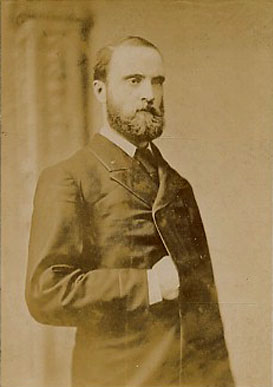
“It was the dream itself enchanted me:
Character isolated by a deed
To engross the present and dominate memory.
Players and painted stage took all my love
And not these things that they were emblems of”
“The Circus Animals’ Desertion” (28-32).
Yeats has led a life of contemplation. We’ve seen him grapple with the importance of sexuality, the psyche of the Irish patriot, and the frailty of the human body. After having achieving a method— his gyres, towers, and moons— to help catalogue these thoughts, we cannot expect Yeats to stray away from these themes. In fact Yeats arguably tones down his obscurity, and in some ways resembles his old poetry with these final ones. For example in “Come Gather Round me Parenellites” we hear the lyrical quality of some of the older poems. In this poem he is addressing Irish revolutionaries, as with a drinking song. Like in “Red Hanrahan’s Song about Ireland” we see Yeats making the revolutionary seem idealistic. They drink to Parnell’s action, love, and pride, but seem to do nothing else. Yeats also confronts the stereotype of the drunken Irishman, who does not toast just the man, but each of his qualities. Unlike his older poetry, Yeats now makes his poems multifaceted. Earlier Yeats may have solely focused on the Irish identity, but this poem deals with love as well. Parnell slept with another politician’s wife and the scandal and shame eventually led to the division of his political party. Like with tales of Helen and Dido, personal love led to the collapse of political forces. And we see Yeats turning Parnell’s love story into a myth. For the Irish poor, the folk, have embedded this story into their spirits. And for Yeats this gives Parnell a sort of immortality, for
“Stories that live longest
Are sung above the glass,
And Parnell loved his country
And Parnell loved his lass” (29-32).
Yeats is almost suggesting that even though Parnell “saved the Irish poor,” he will be remembered for his scandalous story. So while Yeats has not left the themes he’d been exploring for years they are still there. He places the drinking patriots in a frame of mythology like he did in the past. Instead he shows how the present, contemporary reality, will be the myth of the future.
 One of the most fantastic things I saw Yeats do in these poems was to kill himself. In “Under Ben Bulben” the narrator walks us by Yeats’ tomb with “no marble, no conventional phrase” (89). In some ways I find this poem to act like a will, or even a placement of himself in history, or myth. Yeats discusses the “profane perfection of mankind” (52). This line is in reference to Adam, as if all of mankind is the sculpture of Adam’s doing. And in this line Calvert, Wilson, Blake, and Claude have maybe tried to embody or represent this perfection. The reason why I would call this poem a sort of will is that it gives direction to the Irish poet. In his call to writer’s I see Yeats valuing the voice and the eye. He says to “sing the peasantry, and then/ hard-riding country gentlemen,” and other types of people. Therefore the eye would be necessary to observe the image of these classes. But Yeats also wants you to use the mind as an eye, to look at the past for “the lords and ladies gay/ that were beaten into clay/ throughout seven heroic centuries” (78-80). Since one cannot “see” past generations, Yeats is probably supporting the use of myth or history as an image of the past. Further one needs to look to the future, to see how the Irish might fit into the scope of history, the gyres, and maintain “indomitable Irishry” (83).
One of the most fantastic things I saw Yeats do in these poems was to kill himself. In “Under Ben Bulben” the narrator walks us by Yeats’ tomb with “no marble, no conventional phrase” (89). In some ways I find this poem to act like a will, or even a placement of himself in history, or myth. Yeats discusses the “profane perfection of mankind” (52). This line is in reference to Adam, as if all of mankind is the sculpture of Adam’s doing. And in this line Calvert, Wilson, Blake, and Claude have maybe tried to embody or represent this perfection. The reason why I would call this poem a sort of will is that it gives direction to the Irish poet. In his call to writer’s I see Yeats valuing the voice and the eye. He says to “sing the peasantry, and then/ hard-riding country gentlemen,” and other types of people. Therefore the eye would be necessary to observe the image of these classes. But Yeats also wants you to use the mind as an eye, to look at the past for “the lords and ladies gay/ that were beaten into clay/ throughout seven heroic centuries” (78-80). Since one cannot “see” past generations, Yeats is probably supporting the use of myth or history as an image of the past. Further one needs to look to the future, to see how the Irish might fit into the scope of history, the gyres, and maintain “indomitable Irishry” (83).

No comments:
Post a Comment